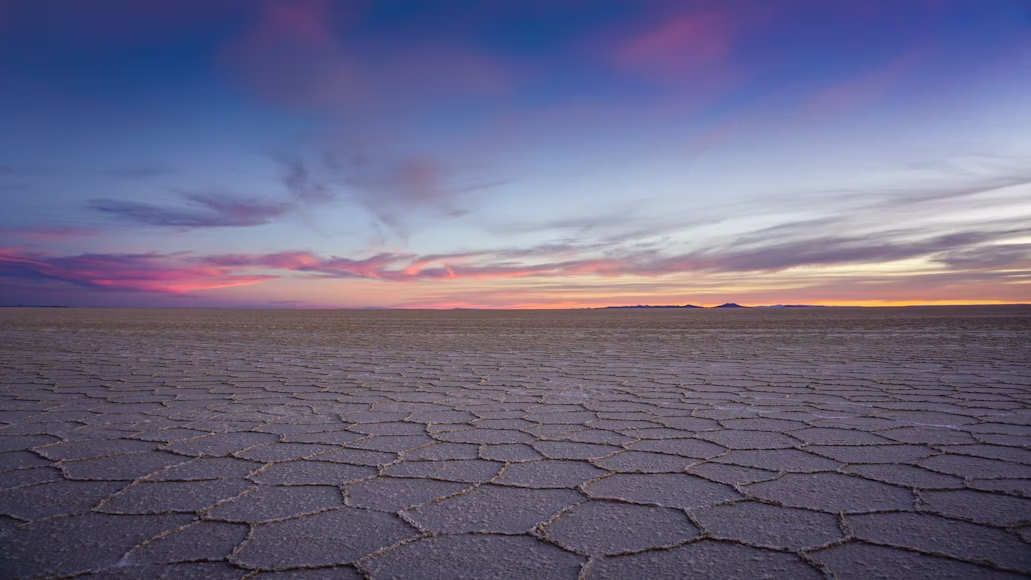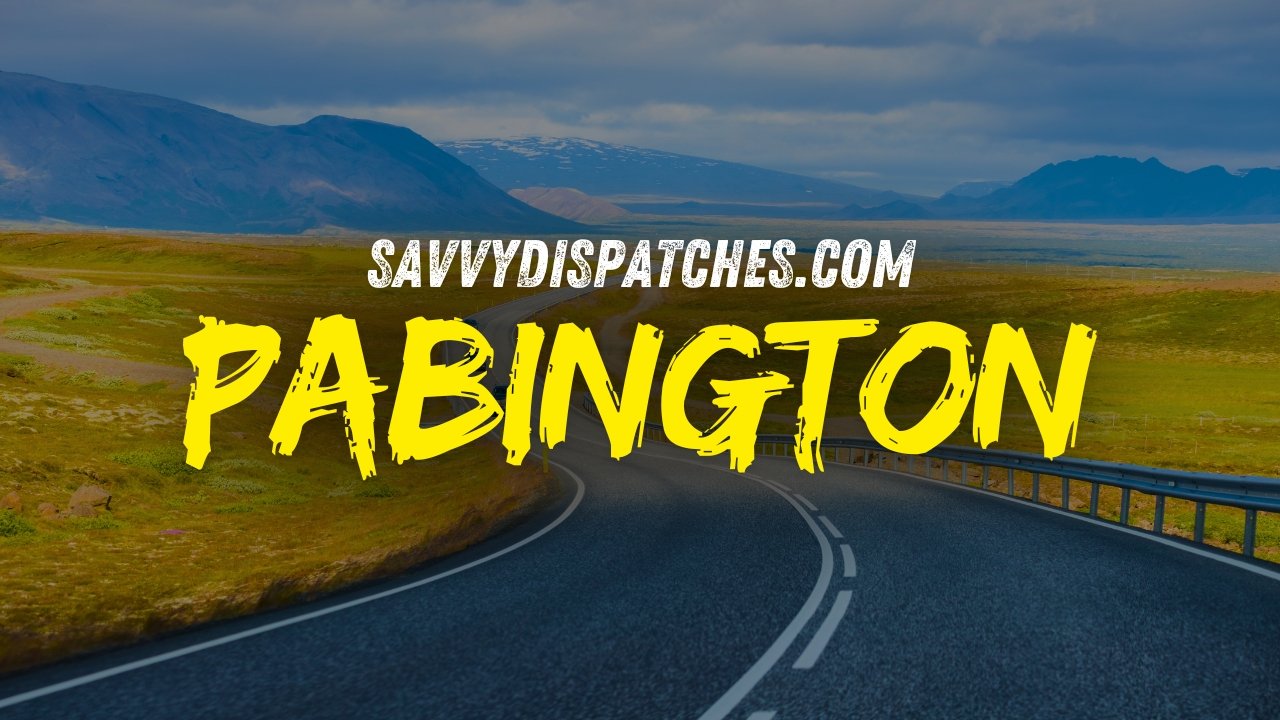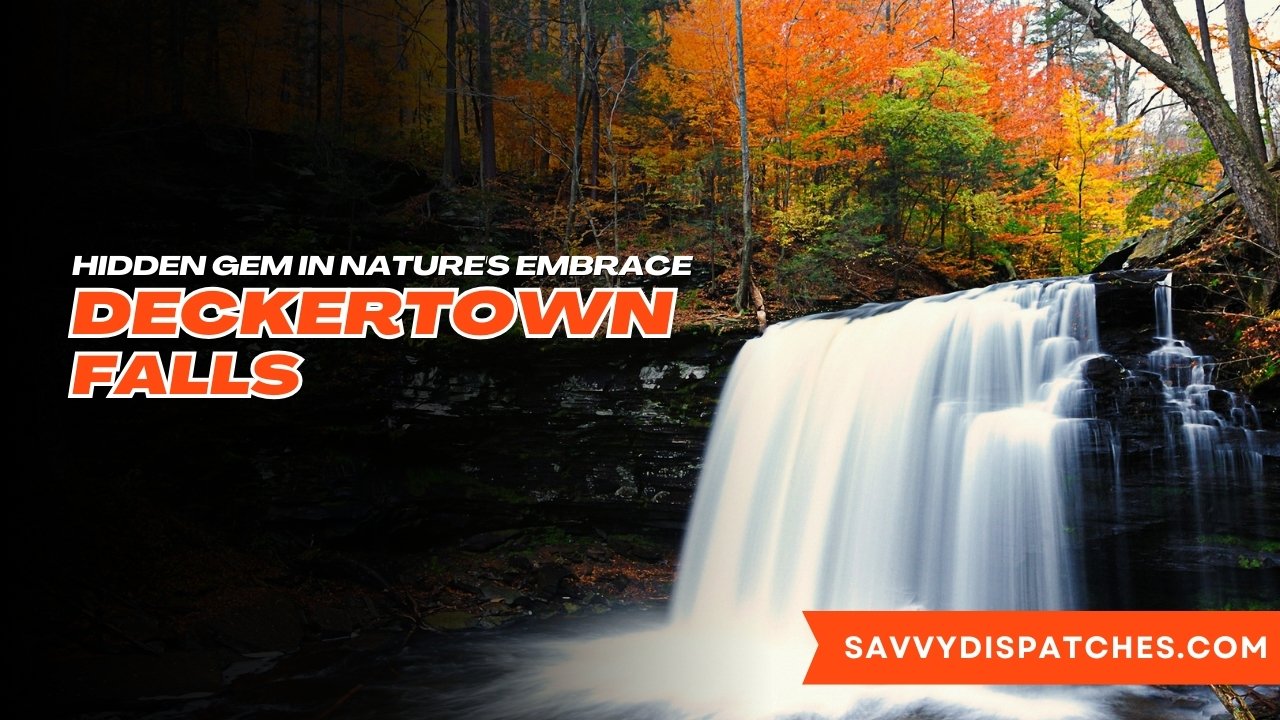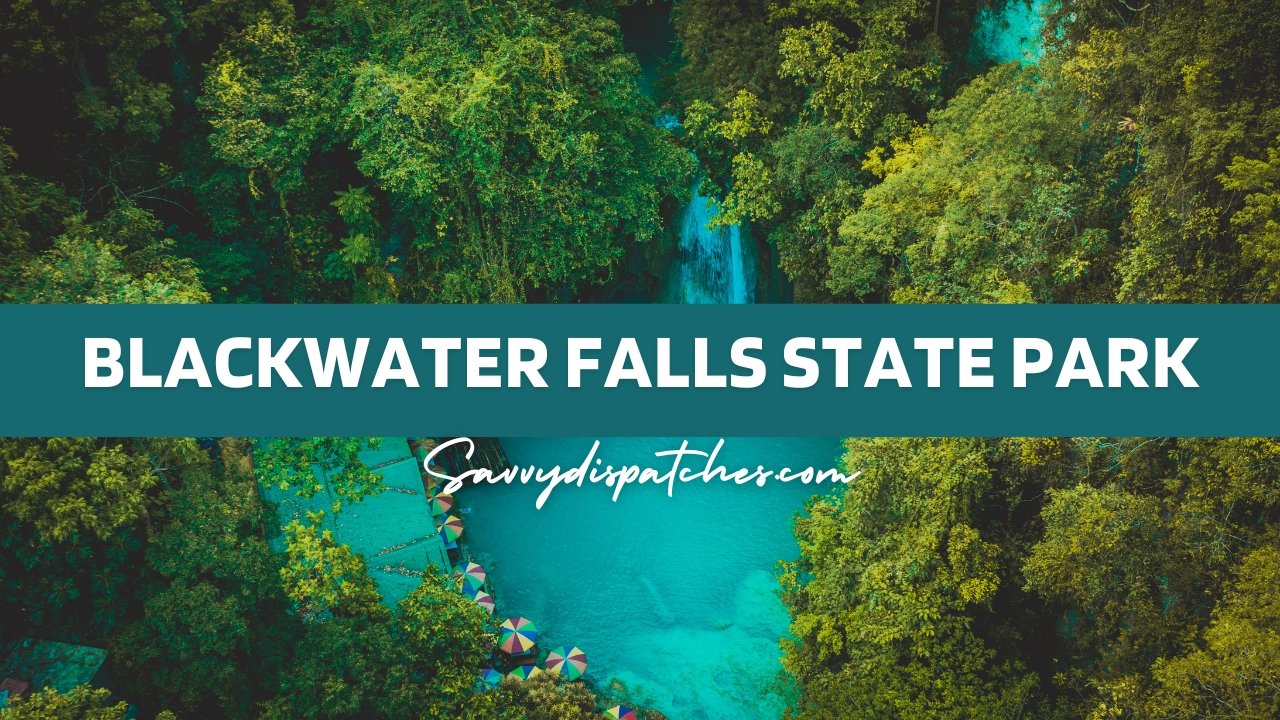Destinations
6 Destinations Where Earth Feels Like Another World

Some places feel so otherworldly that stepping into them is like walking through a dream. In these destinations, you may even meet single Ukraine ladies or other travelers who share your love for adventure and discovery, and this may add a personal connection to your journey.
The world holds landscapes so surreal that they resemble science fiction settings rather than real places on Earth. Red deserts, glowing caves, and mirror-like salt flats test your senses and spark imagination. These destinations reveal nature’s limitless creativity and the vast opportunities for exploration it offers.
You don’t need a spaceship to see something alien. With curiosity, a will to step beyond the ordinary, and a desire for new perspectives, you can reach places that feel like another world entirely.
#1. Salar de Uyuni, Bolivia
High in the Bolivian Andes lies Salar de Uyuni, the largest salt flat on Earth. During the rainy season, a thin layer of water transforms the vast plain into a perfect mirror and creates the illusion of walking on the clouds. This breathtaking natural phenomenon is so unique that it has been used as a filming location for futuristic movies.
The salt flats stretch for over 4,000 square miles, which makes them feel endless. Visitors often describe the sensation of standing there as both humbling and exhilarating. At sunrise or sunset, the sky melts into the horizon and produces colors so vivid they hardly seem real. The region also features geothermal springs, bubbling geysers, and the hauntingly beautiful Train Graveyard near the town of Uyuni.
For photographers and dreamers alike, Salar de Uyuni offers an unparalleled opportunity to capture surreal reflections and experience the uncanny feeling of being suspended between earth and sky.
#2. Wadi Rum, Jordan
Nicknamed the “Valley of the Moon,” Wadi Rum is a desert landscape so striking that it often stands in for Mars in Hollywood films. Towering sandstone cliffs, deep canyons, and rust-red dunes create an environment unlike anywhere else on Earth.
Wadi Rum has been home to Bedouin tribes for centuries, and exploring it with a local guide provides an unforgettable cultural connection. You can ride a camel across sweeping dunes, hike through narrow gorges, or camp under a sky filled with more stars than you ever imagined possible.
The desert’s silence is profound, broken only by the wind sweeping across the sand. At night, the Milky Way stretches overhead, which adds to the sense of being far removed from the modern world. For those seeking both adventure and tranquility, Wadi Rum offers a landscape that feels truly extraterrestrial.
#3. Cappadocia, Turkey
Cappadocia’s bizarre rock formations, known as “fairy chimneys,” make the region resemble a scene from a fantasy novel. These tall, spindly towers were created by volcanic eruptions and centuries of erosion. Early civilizations carved homes, churches, and entire underground cities into the soft rock and left behind a remarkable blend of natural wonder and human history.
One of the most magical experiences in Cappadocia is to watch hundreds of hot air balloons rise at dawn and float above valleys painted in shades of gold and rose. From above, the landscape looks even more surreal, with winding paths, deep canyons, and ancient ruins scattered across the terrain.
Whether you explore on foot, by balloon, or through the labyrinthine tunnels below ground, Cappadocia delivers a journey into another world — one where nature and human ingenuity intertwine in spectacular ways.
#4. Waitomo Glowworm Caves, New Zealand
Deep beneath the green hills of New Zealand’s North Island lies a hidden galaxy. The Waitomo Caves are home to thousands of glowworms that emit a soft blue-green light, which creates the illusion of a starry night sky underground.
Visitors glide silently through the caves on small boats and gaze up at the glowing formations. The experience is almost spiritual, and it combines natural beauty with a sense of mystery. The glowworms are unique to New Zealand, and this phenomenon is truly one-of-a-kind.
Outside the caves, the surrounding region offers:
- Lush forests
- Dramatic limestone cliffs
- Opportunities for adventure sports, including black-water rafting and zip-lining.
The contrast between the dark, ethereal caves and the vibrant landscapes above ground makes Waitomo an unforgettable destination.
#5. Antelope Canyon, USA
In the heart of Arizona’s desert lies Antelope Canyon, a slot canyon famous for its swirling sandstone walls and beams of sunlight that pierce through narrow openings above. Over thousands of years, flash floods carved smooth shapes into the rock and created a natural sculpture gallery that feels almost unreal.

As you walk through the canyon’s winding passages, the walls shift in color from deep reds to soft purples, depending on the time of day. The light and shadow play creates an ever-changing visual experience.
Antelope Canyon is sacred to the Navajo people, and guided tours provide insights into both the geological wonders and the cultural significance of the site. It is a place where art, history, and natural forces merge and leave visitors awestruck.
#6. Pamukkale, Turkey
Pamukkale, which means “cotton castle” in Turkish, is a natural wonder that looks like something out of a dream. White terraces cascade down a hillside, formed by mineral-rich thermal waters. The bright, snowy appearance of the terraces contrasts sharply with the surrounding green hills and blue sky.
Visitors can walk barefoot across the warm, flowing pools, which are believed to have healing properties. Nearby, the ancient city of Hierapolis adds a fascinating historical dimension, with well-preserved ruins and a theater overlooking the travertine terraces.
Pamukkale offers a rare combination of natural beauty and cultural heritage, and it feels both alien and deeply connected to human history.
In Summary: A Planet of Infinite Landscapes
You don’t need to leave Earth to experience landscapes that seem impossible. From glowing caves and mirror-like salt flats to deserts that could double as Martian terrain, these destinations remind you of the planet’s incredible diversity.
Traveling to such places offers more than stunning photos; it provides perspective. It allows you to see how small yet deeply connected you are to the vast, complex world around you. Whether you seek solitude, adventure, or cultural exchange, visiting locations that feel like another planet will ignite your imagination and leave you forever changed.
Destinations
Pabington: Exploring the Rich History & Legacy

Nestled in the heart of history, Pabington is a hidden gem waiting to be discovered. With its vibrant past and rich cultural tapestry, this enchanting town offers visitors an opportunity to step back in time while enjoying modern delights. From its quaint streets lined with charming architecture to the stories whispered through generations, Pabington embodies a legacy that continues to shape lives today. Whether you’re a history buff or simply curious about local traditions, there’s something here for everyone. Let’s embark on a journey through the captivating world of Pabington and uncover what makes it so special!
The Founding of Pabington
Pabington’s origins trace back to the early 18th century, a time when settlers sought new opportunities in uncharted lands. Nestled along a serene riverbank, it began as a modest trading post.
The founding figures were adventurous souls drawn by lush landscapes and abundant resources. They envisioned a community that would thrive through trade and agriculture. As word spread, more settlers arrived, eager to partake in this blossoming haven.
By 1750, Pabington had transformed into a bustling village. Timber-framed houses lined its streets, and markets buzzed with local produce. The spirit of cooperation flourished among residents as they built schools and churches.
This foundation laid the groundwork for what would become an enduring legacy. The essence of unity and perseverance still resonates today within Pabington’s vibrant culture.
Key Historical Events in Pabington’s Past
Pabington’s history is a tapestry woven with significant events that have shaped its character. One pivotal moment was the establishment of its first settlement in 1623, which marked the beginning of community life.
The town thrived through the industrial revolution in the 1800s. Factories sprang up, bringing economic growth and job opportunities for many residents. This period saw an influx of immigrants who contributed to Pabington’s diverse culture.
Another noteworthy event was during World War II when Pabington became a key supply hub. Local factories pivoted to support war efforts, demonstrating resilience and unity among citizens.
In the late 20th century, Pabington faced challenges with urbanization but adapted by preserving historical sites while welcoming modern development. Each era has left indelible marks on this vibrant town, enriching its narrative further.
Famous Landmarks and Monuments in Pabington
Pabington boasts an array of stunning landmarks that reveal its rich heritage. The grand Pabington Castle stands proudly at the city’s heart, a testament to centuries of architectural evolution. Visitors often find themselves captivated by its intricate stonework and lush gardens.
Nearby, the historic Clock Tower marks a bustling square filled with life. This iconic structure not only tells time but also serves as a gathering point for locals and tourists alike.
Walking through Pabington, one cannot miss the serene Riverfront Park. This beautiful space offers scenic views and pathways perfect for leisurely strolls or picnics under the sun.
The Art Museum is another gem in this vibrant town, showcasing works from both local artists and renowned masters. Each piece tells a story, connecting visitors to Pabington’s artistic soul.
These landmarks offer glimpses into the past while inviting exploration of present-day culture and community spirit.
Cultural Traditions and Customs of Pabington
Pabington is a melting pot of vibrant cultural traditions that reflect its diverse history. Festivals are at the heart of community life, with colorful celebrations marking everything from harvests to historical milestones.
One notable event is the annual Pabington Fair, where locals showcase their crafts and culinary delights. Artisans display handmade goods while street vendors offer delicious local cuisine.
Traditional music fills the air during these festivities, featuring folk songs passed down through generations. Dance plays a significant role as well; lively performances often accompany weddings and communal gatherings.
Another striking custom is storytelling—a treasured pastime where elders share tales that weave together folklore and history. This practice fosters connections among residents and keeps Pabington’s rich heritage alive.
Community events also emphasize unity, encouraging participation from all ages. Local groups work tirelessly to keep these customs thriving for future generations to enjoy.
Impact of Pabington on the Modern World
Pabington has left an indelible mark on the modern world in various ways. Its rich cultural heritage contributes significantly to contemporary art and literature, inspiring countless creators across genres.
The town’s historical events serve as case studies for scholars and students alike. Pabington’s unique journey through time offers valuable lessons about resilience and adaptation.
Additionally, Pabington is known for its innovative spirit. Local businesses have embraced sustainable practices that set trends beyond their borders. This commitment influences global conversations around environmental responsibility.
Furthermore, tourism plays a pivotal role in how Pabington shapes perceptions of community and history today. Visitors flock to experience its vibrant culture firsthand, fueling local economies while spreading awareness of its legacy.
Through educational programs and festivals, Pabington fosters connections between generations. These initiatives ensure that the past continues to inform present-day values and aspirations within society.
Preserving the Legacy of Pabington
Preserving the legacy of Pabington is a collective endeavor that involves its residents, historians, and local organizations. Each year, numerous initiatives aim to maintain historical sites and promote cultural heritage.
Community events play a crucial role in this preservation. Festivals celebrating traditional crafts and local cuisine not only engage citizens but also attract visitors eager to learn about Pabington’s rich history.
Educational programs within schools emphasize the importance of understanding one’s roots. Students participate in workshops focused on storytelling and oral histories, ensuring that tales from past generations are passed down.
Moreover, collaboration with preservation societies helps safeguard historic landmarks. These efforts ensure that future generations will continue to appreciate what makes Pabington unique.
By actively engaging with its history today, Pabington creates a vibrant connection between the past and present life in this charming town.
Must-Visit Places in Pabington for Tourists
Pabington is a treasure trove of experiences waiting to be explored. The historic Town Square serves as the heart of the community, surrounded by charming cafes and boutiques. It’s an ideal spot for people-watching or enjoying a local pastry.
Next on your itinerary should be the Pabington Museum. This gem showcases artifacts that tell stories from centuries past, making it perfect for history buffs and curious minds alike.
For nature lovers, Riverside Park offers scenic trails lined with vibrant flora. A leisurely stroll here provides stunning views of the river and opportunities for birdwatching.
Don’t miss Starlight Cathedral, renowned for its intricate stained glass windows that catch sunlight in breathtaking ways. Its architecture alone draws visitors from afar.
As you wander through Pabington’s streets, keep an eye out for street art murals that reflect the town’s creative spirit and cultural diversity. Each piece tells a story worth discovering.
Conclusion: Embracing the Richness
Pabington stands as a testament to the blend of history and culture that enriches our world today. Its founding paved the way for a vibrant community, full of stories waiting to be told. The key historical events have shaped its identity, while famous landmarks serve as touchstones to its past.
Cultural traditions and customs add depth to life in Pabington. They connect generations and celebrate values that resonate with both locals and visitors alike. This unique tapestry influences not only its residents but also extends beyond borders, impacting modern society in various ways.
As we explore how Pabington’s legacy is preserved, it becomes clear just how important this town is. Efforts are made daily to maintain its rich heritage while welcoming new ideas and perspectives. For those planning a visit, numerous attractions offer glimpses into what makes Pabington special.
Embracing the richness of Pabington means appreciating all these elements—its history, people, and culture—woven together into a remarkable narrative that continues to unfold each day.
Destinations
Deckertown Falls: A Hidden Gem in Nature’s Embrace

Nestled away from the hustle and bustle of city life lies a breathtaking retreat known as Deckertown Falls. This hidden gem is not just another scenic spot; it’s a tranquil escape that invites nature lovers to immerse themselves in its serene beauty. Imagine standing before cascading waters surrounded by lush greenery, where the soothing sounds of nature take center stage. If you’re searching for an off-the-beaten-path destination that offers both adventure and relaxation, look no further than Deckertown Falls. Here, every corner reveals something new and enchanting, making it a must-visit location for anyone seeking solace in the great outdoors.
The History of Deckertown Falls
Deckertown Falls has a rich tapestry of history woven into its stunning landscape. Originally inhabited by Native American tribes, the area was revered for its natural beauty and abundant resources. They utilized the surrounding woods and waters, creating a deep connection to this serene environment.
In the 18th century, European settlers discovered Deckertown Falls. They were captivated by its picturesque views and potential for development. Small communities began to flourish nearby as people sought to harness the area’s natural bounty.
As time passed, Deckertown Falls became a popular destination for those looking to escape urban life. Artists and writers found inspiration in its charming scenery, often depicting it in their works. The falls have remained relatively untouched throughout decades of change, preserving their enchanting allure for generations to enjoy today.
The Beauty of Nature at Deckertown Falls
Deckertown Falls is a visual masterpiece where nature displays its artistry. The cascading water tumbles over rugged rocks, creating a soothing melody that enchants visitors.
Surrounding the falls, lush greenery flourishes. Towering trees provide a natural canopy while vibrant wildflowers add splashes of color to the landscape. Every season paints a different picture here; spring brings blossoms, summer offers rich foliage, autumn showcases fiery hues, and winter blankets it all in serene white.
Birdsong fills the air as local wildlife thrives in this untouched paradise. Keep an eye out for deer and various bird species flitting through the branches. Each visit reveals something new.
Sunlight dances on the water’s surface, casting shimmering reflections that captivate anyone lucky enough to be present. This tranquil environment invites deep breaths and peaceful moments away from everyday life.
Activities to Do at Deckertown Falls
At Deckertown Falls, adventure awaits around every corner. The main draw is undoubtedly the stunning waterfall itself, where you can hike along scenic trails that lead to breathtaking views.
For those seeking tranquility, picnicking by the water’s edge provides a perfect escape. Spread out your blanket and soak in nature’s beauty while enjoying lunch with friends or family.
Birdwatchers will feel right at home here. With diverse wildlife thriving in the area, keeping an eye out for local species adds an extra layer of excitement to your visit.
If you’re feeling adventurous, consider exploring nearby streams or engaging in some light rock climbing. Each experience brings new sights and sounds that enhance your connection to this hidden gem.
As evening approaches, stay awhile longer to witness a spectacular sunset over the falls—an unforgettable sight that captures the essence of Deckertown Falls’ charm.
Tips for Visiting Deckertown Falls
Visiting Deckertown Falls can be a delightful experience, but a little preparation goes a long way. First, check the weather forecast. The trails can become muddy after rain, so dress accordingly.
Sturdy hiking boots are essential for navigating uneven terrain. Bring along plenty of water to stay hydrated as you explore.
Consider visiting during weekdays or early mornings to avoid crowds. This allows you to soak in the serenity and beauty of nature without distractions.
Don’t forget your camera; this hidden gem offers countless photo opportunities. Capture the waterfalls from different angles for stunning shots.
Keep an eye out for local wildlife while hiking. You may spot birds and other creatures that call this area home, adding another layer of wonder to your adventure at Deckertown Falls.
Nearby Attractions and Accommodations
Just a short drive from Deckertown Falls, you’ll find several charming attractions that enhance your outdoor adventure. Explore the nearby hiking trails at Pine Ridge State Park. The lush forest and diverse wildlife create an inviting backdrop for exploration.
If you’re in the mood for history, visit the quaint town of Green Hollow. Its local museum showcases fascinating artifacts and stories from yesteryear. Strolling through its streets offers glimpses into a simpler time.
For those looking to extend their stay, various accommodations are available nearby. Cozy cabins provide a rustic charm while modern hotels cater to comfort seekers. Enjoying a campfire under the stars is always an option too—perfect after a day spent exploring nature’s beauty.
Dining options abound as well, with local eateries serving up delicious homemade meals that reflect regional flavors. Each stop adds depth to your experience around Deckertown Falls.
Conclusion: Why You Should Visit Deckertown Falls
Deckertown Falls is more than just a scenic spot; it’s an escape into nature that rejuvenates the soul. The mesmerizing views, rich history, and plethora of activities make it a must-visit destination for anyone seeking adventure or tranquility. Whether you’re hiking through lush trails, picnicking by the water, or simply soaking in the serene atmosphere, there’s something here for everyone.
The stunning landscapes provide endless opportunities for photography and reflection. Plus, with various nearby attractions and accommodations available, planning your trip can be seamless and enjoyable.
Visiting Deckertown Falls means stepping away from daily routines to experience pure beauty in nature’s embrace. So pack your bags and embark on an unforgettable journey to this hidden gem—it’s waiting to be explored!
Destinations
Blackwater Falls State Park: A Hidden Gem in West Virginia

Nestled in the heart of West Virginia, Blackwater Falls State Park is a destination that captivates the senses and rejuvenates the spirit. With its cascading waterfalls, lush forests, and breathtaking views, this hidden gem offers an escape from the hustle and bustle of daily life. Whether you’re an outdoor enthusiast or simply seeking tranquility in nature’s embrace, Blackwater Falls has something for everyone. Discover why this park deserves a spot on your travel bucket list!
History and Background of the Park
Blackwater Falls State Park has a rich history that dates back to the early 1900s. Originally part of the vast lands owned by the Davis family, it became a protected area in 1937 when West Virginia established it as a state park.
The land showcases an array of natural beauty, with its stunning waterfalls and lush forests drawing visitors for decades. The park is named after the enchanting Blackwater Falls, which cascades 62 feet into the gorge below.
During its early days, visitors arrived primarily via train. The railroad was vital for tourism and allowed more people to experience this natural wonder. Over time, facilities were developed to accommodate guests looking for adventure amid serene landscapes.
Today, Blackwater Falls State Park remains a beloved destination. Its historical roots continue to contribute to its charm and allure among nature enthusiasts and travelers alike.
The Natural Wonders of Blackwater Falls
Blackwater Falls State Park is renowned for its breathtaking natural beauty. The centerpiece of the park, Blackwater Falls itself, plunges 62 feet into a canyon carved by the relentless flow of the Blackwater River. Its amber-hued waters are striking against the dark rock formations, creating a mesmerizing spectacle.
Surrounding the falls, dense forests provide a rich habitat for diverse wildlife. You’ll find everything from deer to various bird species flitting through the trees.
The park’s scenic overlooks offer stunning views of cascading waterfalls and rugged landscapes that change with each season. In autumn, vibrant foliage paints a picturesque backdrop.
Hiking trails wind through this beautiful terrain. Each path invites exploration and promises unique sights along the way. Whether it’s mist rising from waterfalls or sunlight filtering through leaves, every corner reveals nature’s artistry waiting to be discovered.
Activities and Attractions in the Park
Blackwater Falls State Park is a haven for outdoor enthusiasts. Hiking trails wind through lush forests, leading to breathtaking viewpoints. The most popular trail takes you directly to the stunning Blackwater Falls itself.
For those seeking adventure, the park offers excellent opportunities for birdwatching and wildlife photography. Keep an eye out for deer, black bears, and a variety of birds that call this area home.
During winter months, visitors can enjoy cross-country skiing or snowshoeing on designated routes. The serene landscape transforms into a magical wonderland with sparkling snow.
Fishing in the nearby rivers provides another way to connect with nature. Anglers can try their luck catching trout while soaking in the peaceful surroundings.
Don’t forget your camera; every angle reveals captivating scenery waiting to be captured! Whether you’re exploring or simply relaxing by the falls, there’s something special around every corner at Blackwater Falls State Park.
Camping and Accommodation Options
Camping at Blackwater Falls State Park offers a chance to immerse yourself in nature. With over 65 campsites, you can pitch a tent or park an RV surrounded by stunning scenery.
Each site comes equipped with essential amenities like picnic tables and fire rings. Restrooms with hot showers are conveniently located nearby for added comfort during your stay.
For those seeking a cozy retreat, cabins are available year-round. These charming accommodations come with kitchen facilities and private porches, perfect for soaking up the views.
If you’re visiting during peak season, it’s wise to book early. The beauty of this park attracts many outdoor enthusiasts looking to escape city life.
No matter where you choose to stay, the sounds of nature will lull you into restful sleep each night. Embrace the tranquility that Blackwater Falls has to offer while enjoying all its wonders right outside your door.
Local Dining and Shopping Options
When visiting Blackwater Falls State Park, you’ll find a charming selection of local dining options that cater to various tastes. From cozy cafes serving homemade pastries to hearty diners offering comfort food classics, there’s something for everyone.
For a taste of West Virginia’s local flavors, don’t miss out on the nearby restaurants featuring farm-to-table dishes. Many establishments pride themselves on using fresh ingredients sourced from local farms.
Shopping enthusiasts will enjoy exploring quaint boutiques and art galleries in the nearby town of Davis. You’ll discover unique handcrafted items and regional artwork perfect for souvenirs or gifts.
Local markets also offer an array of artisanal products, including jams, honey, and crafts made by talented locals. Taking time to indulge in both dining and shopping enhances your experience at Blackwater Falls State Park while supporting the community.
How to Plan Your Visit to Blackwater Falls State Park
Planning your visit to Blackwater Falls State Park can be exciting and straightforward. Start by checking the park’s official website for hours of operation, entrance fees, and any seasonal updates.
Consider the best time to go. Autumn offers stunning foliage, while summer is perfect for hiking adventures. Pack appropriately based on weather forecasts.
Create a list of must-see spots in the park, like the iconic Blackwater Falls itself or Elakala Falls. Don’t forget your camera—every angle provides a unique view.
If you’re staying overnight, book accommodations early. Choose from campsites or nearby lodges that fit your comfort level.
Bring essential gear: sturdy shoes for hiking, water bottles to stay hydrated, and snacks for energy during your explorations.
Insider Tips for a Memorable Experience at the Park
To make the most of your time at Blackwater Falls State Park, start early. The mornings are serene, and you can enjoy stunning views without the crowds.
Bring a good camera along. Sunrise and sunset offer breathtaking light for photography. The falls glow in vibrant colors, creating perfect moments to capture.
Wear comfortable shoes if you plan on hiking. Trails vary in difficulty, so choose one that suits your fitness level but don’t shy away from exploring new paths.
Take note of local wildlife. Keep an eye out for deer or even black bears—just remember to keep a safe distance!
Don’t forget binoculars for birdwatching; the park is home to various species that will delight nature enthusiasts.
And finally, pack a picnic. There are plenty of scenic spots where you can relax and savor every bite while surrounded by stunning natural beauty.
Conclusion: Why You Should Add Blackwater Falls State Park to Your Travel List
Blackwater Falls State Park is more than just a picturesque destination; it’s an experience waiting to unfold. With its stunning natural beauty, rich history, and diverse activities, this hidden gem in West Virginia offers something for everyone. Whether you’re hiking along the scenic trails, gazing at the mesmerizing waterfalls, or enjoying a cozy campfire under the stars, each moment spent here creates lasting memories.
The park’s unique landscape makes it a perfect getaway for nature lovers and adventure seekers alike. From bird watching to photography opportunities that capture breathtaking views year-round, every visit can be different and exciting.
If you’re looking for tranquility or adventure—or perhaps both—Blackwater Falls State Park should undoubtedly find its way onto your travel list. The combination of outdoor fun and serene relaxation ensures that this beautiful location will leave you yearning to return again and again. Embrace the spirit of exploration and discover what makes Blackwater Falls truly special!






